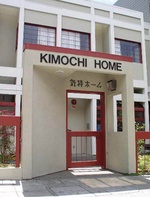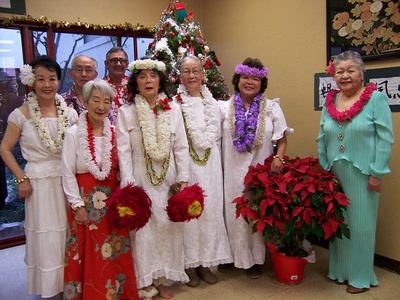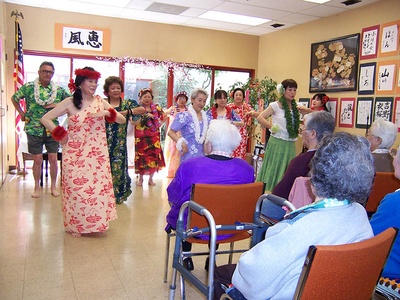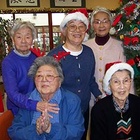In 1971, a group of San Francisco Sansei began providing Issei seniors with rides and pedestrian escorts to and from their homes, as well as help with government health benefits applications. The non-profit multi-service care organization Kimochi Inc., located in San Francisco’s Japantown, grew out of these early efforts. Around the same time, Japanese American student activists from San Jose State University and UC Berkley began organizing support systems for elderly Issei, focusing on health fairs in San Jose and housing issues in Berkeley. Over the years, their efforts coalesced to form Yu-Ai Kai Japanese American Community Senior Service (YAK) in San Jose’s Japantown and the Japanese American Services of the East Bay, Inc. (JASEB). All three organizations were outgrowths of the Asian- American consciousness movement of the late 1960s, which later helped fuel the World War II redress and reparations movement.
My interest in these organizations and Nikkei eldercare in general grew out of my grandmother’s stay at Keiro Senior Healthcare in Los Angeles and my mother’s occasional work there, which gave me a glimpse into the unique cultural environment of the Japanese old folks home. Later, watching my mother and her friends approach decisions about retirement living and beyond, I realized that the all-Japanese environment once mandatory for non-English speaking Issei has become only one of several options for the Nisei and older Sansei generations. So I launched this exploration into the future of West Coast Nikkei eldercare.
After surveying the Los Angeles Nikkei eldercare scene, I moved my attentions north, to the Bay Area and Silicon Valley, to find out how Nikkei communities in those areas are facing the challenges of increased assimilation, the migration of Sansei and Yonsei away from the old Japantown hubs, and the economic challenges that face the entire healthcare industry now.
One difference is that unlike their Los Angeles counterpart, Keiro Senior Healthcare, Kimochi, YAK and JASEB were launched by Sansei, not Nisei. Another is that where Keiro developed residential, assisted-living, intermediate, skilled nursing and rehabilitative care, these organizations—with a smaller Nikkei population to serve and smaller budgets—have focused more narrowly on assisted-living facilities and social service programs. YAK is developing a wellness model that emphasizes health, exercise and preventive care. To varying degrees, these organizations have started reaching out to other Asian populations as a means of responding to changing demographics and to stay afloat financially.
Today in San Francisco, only a few Issei remain, says Sandy Mori, one of the co-founders of Kimochi and its recently retired development director, and the average age of its Nisei clients is 80. “Now, it’s the older Sansei who are coming into the picture,” adds Mori; they are the group for whom Kimochi (the word means “feelings,” and refers to the respect, gratitude and love the organization’s founders felt toward their elders), is now developing services.
The center emphasizes an “aging in place” approach that allows seniors to stay in their homes as long as possible. Although Kimochi runs a small, 20-bed residential and respite care facility, its emphasis is on its social day care program for 40 clients, a nutrition program, transportation and home meal delivery services.
Kimochi’s federally funded nutrition program serves about 300 Japanese-style meals (a $2 donation is suggested) per day to seniors over 60 and their spouses, handicapped people who live with a senior, and those assessed to be nutritionally in need. A large segment of the people who congregate for these lunches is Nisei and shin-Issei. “We were the first nutrition program in the state of California to do ethnic meals,” Mori says. “We wanted to show that meals that are culturally relevant are very important as people get older.”
I know this is true from watching my grandmother’s tastes narrow and revert to her earliest food preferences as she grew older. As a newcomer to the U.S. in the early 1920s, she quickly learned how to make meatloaf, tuna casserole, tacos and lemon meringue pie. After a certain age, however, she preferred sashimi, sushi, and for some reason, the occasional non-Japanese meal of Popeye’s fried chicken.
Kimochi also delivers hot lunches to about 125 seniors, not all of them Japanese. “The meals are for anyone who likes Japanese food,” Mori says. Although only 40 percent of those who come in for hot meals at Kimochi’s Sutter Street location are Japanese, 90 percent of Kimochi’s home delivery clients are Japanese. “It has to do with the culture,” explains Mori; “A lot of Japanese don’t want to come get a meal where people will see them. There’s a lot of pride involved.” Although the federally funded nutrition program, including home-delivered meals, is not based on need, some older Japanese seniors may view the luxury of a hot meal showing up on their doorstep as charitable handout.
Because Kimochi’s residential facility is non-medical, meaning nursing services are not included, it receives no government funding. Kimochi’s board decided not to provide medical services as Keiro Senior HealthCare in Los Angeles does, Mori says, because it felt the cost of health care was too high; the organization wanted to focus on social services instead. At one time, Kimochi benefitted more from local government and private foundation grants, but those sources have dried up along with the poor economy. “There are more foundations that give to children and youth,” observes Mori. “There is still this attitude in our country that people who are older have had their day, you don’t spend resources on them, you don’t pay a lot of attention, you just don’t deal with their issues. They don’t see aging programs being about the future.”
Fees for residential care range from $2,870 to $4,550 per month, based on the level of care required; respite care is $165 per day. Four Supplemental Security Income beds are available (for the blind or otherwise disabled aged), but they are subsidized at only $800 a month; the balance comes from private fundraising.
“It’s a struggle,” says Mori of keeping the non-profit afloat, and something that would not be possible without the center’s 200 volunteers. Even with this strong support system, however, Mori says, “It’s continual fundraising. My thinking now is that our donor base has to be more extensive, we’ve got to go beyond the Japanese community in order to maintain what we’re doing.” The organization serves a large population of Korean seniors, and has hired a part-time Korean social worker. Adds Mori, “Now we have to go and raise money from the Korean community.”
Scott Ito, Kimochi’s planned giving manager, is working to engage younger Sansei and Yonsei in fundraising. Kimochi holds a Sansei Live musical variety show every year featuring performances and food demonstrations, and experimented with a hip hop fundraising event last year. This year, Kimochi organized a telethon featuring a film by local public defender Jeff Adachi on Asian American stereotypes. The show was broadcast live on the local Asian-language station KPFS, and raised more than $15,000 for Kimochi.
Ito, who worked at Keiro Senior HealthCare in Los Angeles before returning his native Bay Area to work for Kimochi, is optimistic about the prospects of Yonsei taking over the Sansei fundraising and leadership roles at Kimochi. He points out that although Keiro L.A. was founded by Nisei, and Kimochi by Sansei, both organizations “attacked the same problems and ended up pretty much in the same place.” Ito adds, “It makes me very optimistic about the role of the Yonsei generation. This deep Japanese sensibility of taking care of our elders in a respectful way, it’s pervasive beyond any assimilation. We all want our parents and grandparents to be in the most comfortable place possible.”
© 2010 Nancy Matsumoto










